|
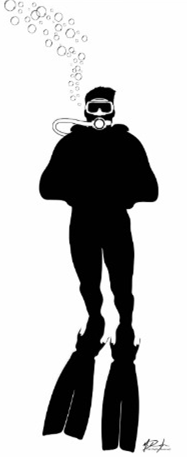

Dive Log
Back to

Back to

|
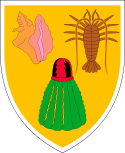
Grand
Turk, British West Indies
May, 1982
One of the finest diving experiences we
had was our trip in 1982 to a small island at the end of the
Bahamas called Grand Turk. There was no deep sea port when we
were there so the cruise ships and the cruise industry hadn't
made their presence known...yet.
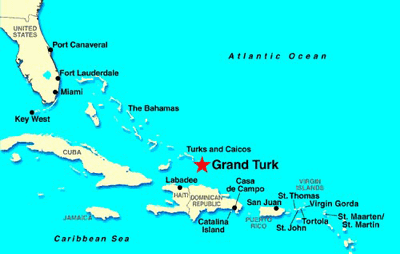
We had a day's layover in Miami so we went
to Ocean World and played the typical tourist as we watched the
water show featuring seals, otters, porpoise, and whales.
We walked through the botanical gardens and looked through all
the glass sea tanks and had a lovely day of it. Our flight
out of Miami delivered us to the island early the next morning.
|
A bit of history...
Grand Turk was first colonized in 1681 by
Bermudians, who set up the salt industry in the islands. In 1766
it became the capital of the country. For some time, at least
until the early 19th century, Grand Turk was often referred to
as Grand Cay, not to be confused with either Grand Cay in the
Bahamas or Grand Cayman.
It is possibly the landfall island of
Christopher Columbus during his discovery of the New World in
1492. San Salvador Island or Samana Cay in the Bahamas is
traditionally considered the site of Columbus' first landfall,
but some believe that studies of Columbus' journals show that
his descriptions of Guanahani much more closely fit Grand Turk
than they do other candidates.
The name comes from a species of cactus on
the island, the Turk's Cap Cactus (Melocactus intortus),
which has a distinctive cap, reminiscent of an Ottoman fez.
Grand Turk gained international attention in
1962 when John Glenn's Friendship 7 Mercury spacecraft
landed in the vicinity of Grand Turk Island off the southeast
shoreline. A replica of the Friendship 7 is on display in
Grand Turk at the entrance to the Grand Turk Island airport.
|
Island air service and airports are an
experience. Most of our trips to the islands themselves
were aboard older DC-3s. Some islands were still using
Ford tri-motors for their service. The accommodations are
snug since they cram as much luggage fore and aft and people in
between. Flying close to Cuba you may see a fighter plane
alongside to asset their air space. The Airstrips on most
islands, including Grand Turk, begin and end at the water's
edge. The pilot no more than sets the landing gear down on
the tarmac or gravel when full-flaps are applied and the plan
stops none-too-short of plopping into the ocean.
The arrival of a plan was an event for the
natives who would come in to see the landing (maybe they were
placing bets on its success). There were always plenty of
young help for a few coins to carry the baggage to customs.
Customs and custom officials are a different breed of cat.
Rarely do these people seem to smile and God forbid you tell a
joke. The normal customs procedure was for us to step up
to a window, present our passport, answer a few questions, pay
two or three dollars in exact change, get the passport stamped,
and proceed to a table where our luggage was quickly inspected.
Then it was throw your gear and baggage into a truck, van, or
car for a ride to the hotel.
 |
While on Grand Turk, we stayed at the
hotel Kittina (now the Osprey Beach Hotel). The
name was a derivative of the first names of the husband
and wife owners - Kit and Tina. When we checked in
there was one other father and his son in the
hotel and they were leaving in the next few days.
Otherwise, we were the only guests in the hotel.
We checked into our room which didn't appear like the
brochure so we checked with the hotel clerk who
apologized and resituated us in a deluxe room.
The hotel sat/sits on Second Street.
First Street slipped into the ocean many years ago.
Grand Turk is a page out of a
history book and a trip through the village was like
walking through a stereotypical British colonial island
settlement of the 1800's.
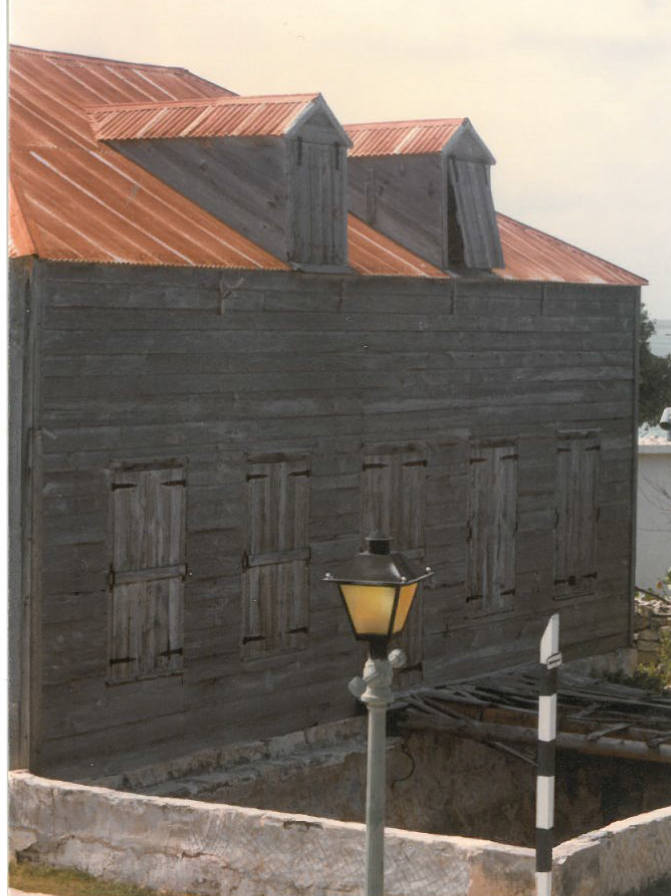 |
Fresh water was a precious
commodity and the buildings were constructed
over large cisterns to collect rainwater.
The larger houses were made of stone with tiled
roofs and shutters with screened windows.
The majority of homes were of wood but brightly
painted and highly decorated with gingerbread
and gables.
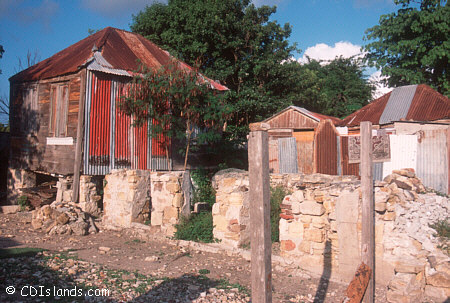 |
| |
|
|
When we were there, the island was still a
British colony and island officials were dressed in crisp white
shirts and Bermuda shorts, knee-high white socks, and polished
black shoes - a stark contrast to their dark skin. In all
of the islands we visited, Grand Turk was the cleanest.
The people were poor, but they and all of their children were
clean and their property was neat.
The first afternoon, Dad and I went to the
back of the hotel where the dive operation was housed. The
Dive Master was a lithe young man in his thirties named Mike
Spiller. Mike was originally from Texas - something about
Texas and diving we never figured out. Visiting, and
staying with Mike, was a young woman named Susan who was a
professional photographer from new York who was doing some
promotional materials for the island tourism. We also met
Sucker, the dive dog, who joined us for every boat trip.
As a Dive Master, Mike was excellent. His knowledge of the
reefs and of the aquatic life made each dive enjoyable. As
a person, Mike and Susan were friendly and outgoing.
Our first dive was at "Black Forest" - a
wall beginning at 40 feet and dropping down to 7,000 feet.
The water here was a bit colder and it was recommended that we
wear our short wet suits. While on the dive, swimming in
the sandy shallows, Mike and I both saw a piece of metal laying
exposed in the sand. Mike got to it first. Not knowing
what it was, he showed it to me. Once I pantomimed a sword
fight and outlined the hilt across my hand, I got the "ah-ha"
look. It was a hilt from an old broadsword.
Our evening meals were spectacular.
The feast they laid out for just the two of us was staggering.
Meals usually consisted of three meats, fish, seafood, salads,
beverages, and several choices of desert. To think that
most of the items were shipped in made the whole meal more than
a little extravagant...but who were we to complain.
Two o-clock in the morning is early by any
standard - certainly by mine. But this was the time when
the roosters began to crow and the wild burros began to run up
and down the street. First nights are never restful on
trips and this certainly didn't help matters. In the
morning, after hours of crowing which only stopped with the
sun's rising, we learned that the trouble was with one elusive
rooster who had evaded all attempts of capture and demise.
It had been going on for so long that the island T-shirts
featured a rooster with the initials S.D.I.G.T.K.T.F.R. - Some
Day I'm Going To Kill That Fucking Rooster. Guests had
even gone so far as to set hunting expeditions at wee hours of
the morning armed with spear guns, bee bee rifles, rocks, sling
shots, but all to no avail. The rooster would start the
other roosters crowing and the burrows running. This trip
produced little sleep.
| Early
dives included "Anchor Reef" - a shallow water dive to
an old Spanish Anchor with exposed encrusted flukes and
chain - and "Finbar's Reef" - a wall dive at about 80
feet and was where where I first used my new underwater
camera.
If I had to choose which type of
diving I preferred, it would be wall diving. I
found it easier to float along with the current in front
of a coral wall, but it was also easy to lose track of
your depth.
"Library Reef" was our first ocean
night dive. Night dives are by their nature
interesting because an entire world of animals come out
that are not seen during the day. Shell-less but
not defenseless nudibranchs such as brittle starts,
basket stars, shrimp, lobsters, and crabs forage for
food illuminated only by the night sky and our dive
lights. This is another occasion where maintaining
the proper depth can be difficult because you can become
disoriented. |
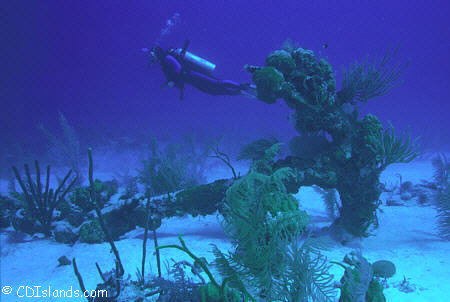 |
On a number of occasions, we were
privileged to dive with the Governor of Grand Turk - John Strong
- who Mike had certified as a diver in an attempt to create an
awareness within the government of what a natural resource there
was and how to protect it. John Clifford Strong (born
1922) was Governor of the Turks and Caicos from August 1978 to
September 1982. John was a British government
representative who was asked by the island government to stay
over an additional year to ease the transition from British
colony to an independent state. A year later, the island's
new government was indicted on drug trafficking charges.
John and his wife were joined by their daughter Penny and her
husband Dave who worked at a distillery on Tasmania and were
vacationing on the island for a few months.
Our trip to "Long Cay" - an island off the
mainland - was an all-day event. Lunch was provided by the
staff and the boat loaded with gear and supplies. The
Governor and his family joined us for the trip to this volcanic
island. The dive was rather non-decrypt; probably due to
the rough seas and strong currents. And even through we
vowed never to do it again, my navigation with the compass
brought us up short of the dive boat. The seas were rough
and it was a struggle to get back to the boat. Mike didn't
hesitate to jump in and help Dad swim back.
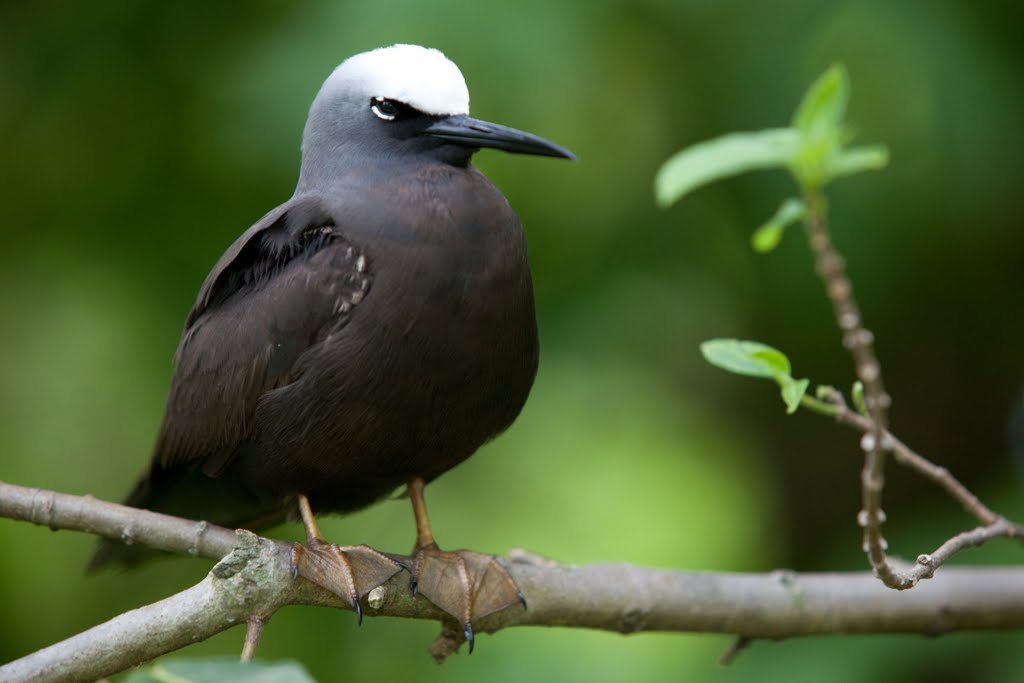 |
The
island of Long Cay is very small and is populated by a
large colony of Noddy Terns, which is why the Governor's
wife - an avid ornithologist - wanted to join the dive
party. The natives come by boat to the island to
help themselves to tern eggs. Dad and I spent the
afternoon exploring the island sifting through refuse
washed up on shore under the watchful eyes of terns and
iguanas. The island surface was so jagged that it
cut through the bottoms of our hiking shoes; taking
entire chunks of Vibram with every step. |
Mike and Susan, and of course Sucker,
became good friends during our stay. One evening they
asked if we would like a tour of the island. I believe it
was to the northeast end where there was an abandoned US
military base complete with barracks, officer's quarters, empty
pool, motor pool, lighthouse, and other buildings all in
relatively good shape and watched over by one of the island
natives who lives on site. The Osprey enjoy the lighthouse
and we enjoyed seeing the water spout that was created offshore
where strong currents meet and spiral upwards of 200 feet.
It was a most unusual sight.
|
A bit of history...
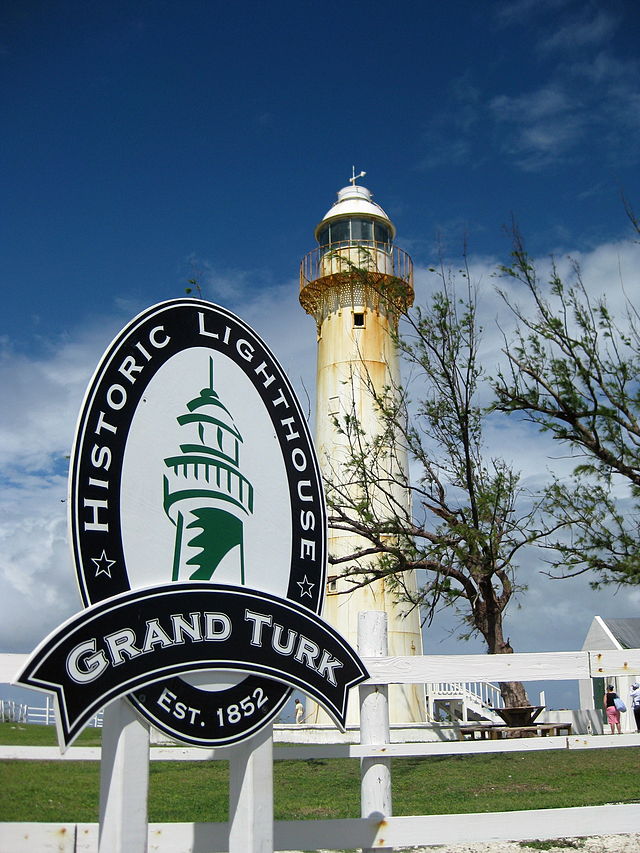 |
The 60
feet lighthouse, overlooking North Creek, was completed
by British architect Alexander Gordon in 1852 to alert
sailors of the shallow reef. Brighter kerosene lamps and
a more powerful Fresnel lens were added by the Chance
brothers in 1943 and remained in use until 1972 when the
lighthouse was electrified.
A Mr. Frith secured the building
of the island's first modern lighthouse in 1852, saving
the island's salt trade, which had waned when vessels
stopped arriving due to difficultly with navigation.
It was designed by the architect Alexander Gordon to
alert sailors of the shallow reef. Constructed in
the United Kingdom, it was shipped in pieces to the
island. In its heyday, a lighthouse keeper stayed
all night at the lighthouse to monitor the lamps and
slept during the day in the small keeper's house at the
side.
The still functional lighthouse
site is often referred to as Grand Turk Historic
Lighthouse Park. The lighthouse and lighthouse keeper’s
house are a historic site under the protection of the
National Trust. A view point for watching whales
tourists come to lighthouse hill in February and March. |
|
Mike and Susan then drove us to a local
restaurant for a native dinner. The restaurant looked more
like a bath house than an eatery. The food was served
family style in large bowls and included fried conch.
After gorging ourselves, there was still enough light and time
left in the day to visit the other end of the island. At
the opposite end is a US installation that was manned by one
operator. It was a tracking station built during the days
of the Apollo space missions and was still being used as a radio
tracking station when we were there.
There were relatively few native men on
the island when we were there. They spend nine to ten
months out of every year out at sea; just long enough to earn
enough money to add a few more rows of bricks to their partially
built home. There were houses all over the island in
various stages of construction. It truly was a different
culture. People didn't steal from others because there was
nowhere to run. OK, one man did rob the bank and got away
with bags of pennies and couldn't be found for several days.
They finally located him with a military helicopter that was
flown in from another island to search the caves. The
sound was so unusual that he stuck his head out to see what it
was, giving his location away.
The jail on the island reflects the
culture. It was a relatively large complex of building
with a walled parameter and barbed wire. The main gate was
tied shut with a piece of rope but it was guarded. At the
back of the compound, a section of the wire had been removed so
that the prisoners standing on a box could converse with friends
who could also pass them a beer over the wall. Certainly a
relaxed penal system, but it seemed to work.
We returned to "Library Reef" for a night
dive. The vertical walls looked like stacks of books -
thereby its name - and we say numerous slipper lobsters and what
had to be the granddaddy of all crabs. Granted, everything
looks larger under water, but this monster was inside a barrel
sponge and its claws were as big as my forearm.
"Amphitheater" formed a large
crescent-shaped reef resembling a coliseum. It was here
that Susan spent time with Dad and I teaching us what could and
could not be handled safely. But the general rule for
divers is to take only memories and leave only bubbles.
Plans to dive a blue hole on our last day
of diving had to be passed due to strong winds. Currents
in a blue hole can be treacherous and unpredictable under the
most favorable conditions. To dive the hole that day would
have been foolish. We chose to return to "South Canyon"
and were again joined by the Governor and his family.
There is something to say about English charm. John Strong
was a very distinguished gentleman, extremely articulate and
well educated, yet easy to talk to. I think he and Dad
enjoyed their conversations because they were about the same
age.
The hotel was still operating on the
island but the dive shop had closed shortly after we left.
The island adjusted to its new independence and for many years
was only accessible by sailboat and plane. We had heard
that Mike started another dive operation and if so, we would not
hesitate to recommend him.
Back to

Back to

|